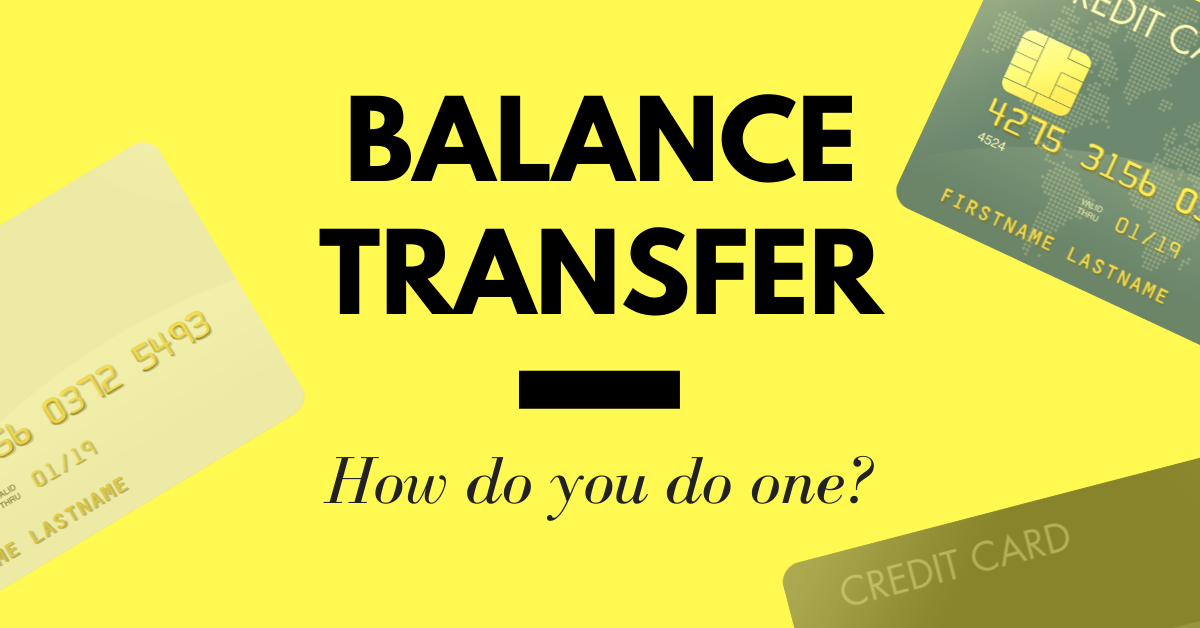About the Author
Aileth Kim
Aileth is on the Operations Team with RentReporters. She has been a part of the community since 2018.

October 27, 2021
11 mins read

Credit cards offer consumers, like you and I, the flexibility and convenience to purchase products and services on credit. Swiping the card is easy and we don’t really think much of it until the statement closing dates loom near.
At the end of 2022, total credit card debt hit a record $930.6 billion, according to the latest report by TransUnion. 37% of those with credit card debt don’t know that balance transfer offers exist as a possible solution. We’ll go over what a bank transfer is and how to do one below.
A balance transfer is the act of transferring debt from one credit card to another credit card. What’s the point of doing that? Because credit card companies often offer balance transfer promotions that can save you money spent on interest fees. Plus, it’s a much better alternative than a payday loan.
Let’s say you have a $5,000 balance at a 20% annual percentage rate (APR). If you pay off the entire balance before your statement’s closing date, you won’t be paying additional interest fees. But what if unexpected finances get in the way and you’re unable to pay off the entire balance off by the closing date? If you could only afford $250 per month, it would take 24 months to pay the balance and you’ll end up with $1,110 due in interest.
This is where balance transfer promotions come in handy. You would transfer a balance that is racking up interest fees on one card, to another card with a promotional offer. The promotional offer will usually charge you 0% interest for a period of time, typically ranging from 6 to 20 months or even longer. In other words, the balance that you were having a hard time paying off because you’re paying so much in interest, will no longer have any interest charged on it for months. This will dramatically lower your monthly payments and save you a ton of money, making it easier to get out of debt.
As another plus, balance transfer cards also offer additional incentives for more advanced credit card users. For example, you can charge a large balance on a rewards card to take advantage of benefits like cash back or travel points. You could then transfer the balance to a 0% balance transfer card and pay off the debt over a long period of time with no interest. You’re essentially borrowing money for free and getting rewarded with cashback and points!
Now that we know what a balance transfer is, let’s look at another example. Going off of the example we previously mentioned, let’s say you have a $5,000 balance on a credit card with a 20% APR, which is a fairly low rate compared to other cards out there. At that rate, carrying that balance and paying $250 a month would take you 24 months to pay off and cost you $1,110 in interest.
But let’s say you qualify for a 12 month 0% balance transfer on a new credit card. So you transfer the $5000 balance and now have a year to pay it off with no interest. This would cost $417 per month to do if you have extra room in your budget. However, if you can’t afford to make that extra $167 payment, then you can continue paying $250 and pay down $3,000 of debt, interest-free, over a 12 month period and then do another balance transfer towards the end of the promotional period, carrying over the remaining $2,000 balance to the new card.
At that point, you have the option to pay the same $250 per month you had been paying and be debt-free in 8 more months, or if you have some other expenses and need some extra breathing room in your budget, you can pay $167 per month and be debt-free in 12 months!
Either way, you’re debt-free in the same 24 months if you hadn’t had your balance transferred, except now you save yourself $1,110 in interest!

In just a few minutes, discover your credit knowledge level and get instant access to a FREE credit education course tailored to you!
The first step is to look for a card that is compatible with your credit score. Balance transfer typically requires a strong credit score. Here are a few balance transfer credit card options for you.
If you’re a student, the BankAmericard for Students card is 2021’s best student credit card for financing, offering an introductory 0% interest on both new purchases and balance transfers for the first 18 months your account is open. So if you need to buy books you can do so interest-free for 18 months, or you can move high-interest debt to a no-interest debt card for 18 months. Plus, it has no annual fee AND you don’t need a credit history to apply!
Before applying for the card, make sure your credit is in tip-top shape. If your credit is frozen, be sure to temporarily unfreeze it. Once that is done, you’re ready to transfer your balance, provided that you’ve been approved for the card.
The process to transfer your balance can vary depending on the company, but you will probably have the option to do your transfer online, via phone, or by requesting a check. The processes all generally work the same. You’ll need to provide the information of the credit card you are transferring from to your new credit card company who will then work things out with the previous company to apply the balance to your new card. After that, you just pay the balance off like you would with any other card.
Once the transfer has been completed, it is important to keep your old credit card. Closing your card can hurt your credit score. A large part of your credit score is the average age of your account. Therefore, if you close an old card and only have the new one open, your average age credit becomes significantly reduced.
Your utilization rate also makes up another large portion of your credit score. When you get a new card, your total available credit increases. This is a good thing, your utilization rate is now lower. A $1,000 balance on a $2,000 credit limit equates to a utilization rate of 50%, which is very high. That same $1,000 balance on a $4,000 limit after you open a new card is only 25% utilization which is much better. If you close the old card, your utilization rate is the same as it was before and your average credit age is lower so your score will drop.
And lastly, if you were paying your old card on time, the payment history for that card will no longer count on your score since it is now an inactive tradeline. So keep the card open, freeze it in a block of ice, cut it up, but whatever you do, don’t close it!
Now that you know what balance transfers are and how to go about them, there are still a couple of important things to keep in mind. Some promotions have no fees attached to balance transfer, while others may cost up to an average of 3%. Usually, the money you save on interest by going to a 0% card more than makes up for the cost of transferring if any, but be sure to do the math and make sure it’s the right move for you.
If you cannot qualify for a 0% balance transfer, you may still be able to transfer from one card to another that has lower interest rates, again just be sure to run the numbers and make sure it makes sense. If you have not paid off the transfer balance before the end of the promotional period, then you may be charged the full retroactive amount of the interest on the entire balance, not just the balance remaining. And finally, late payments can cause you to lose out on interest free promotion, so make sure to always pay on time!
Aileth is on the Operations Team with RentReporters. She has been a part of the community since 2018.
